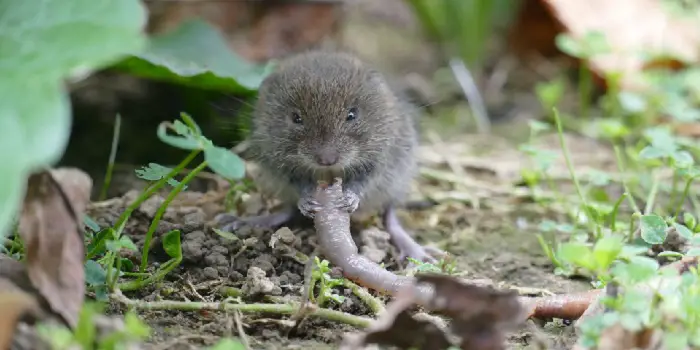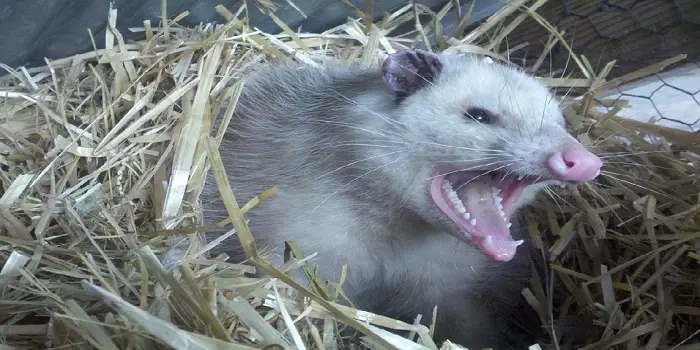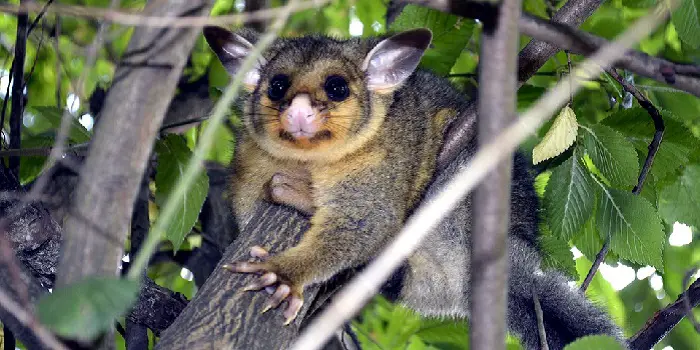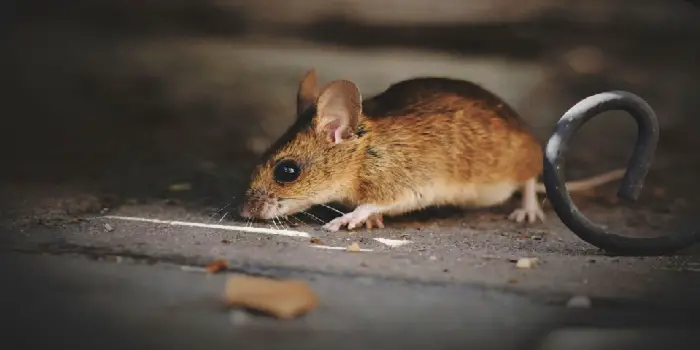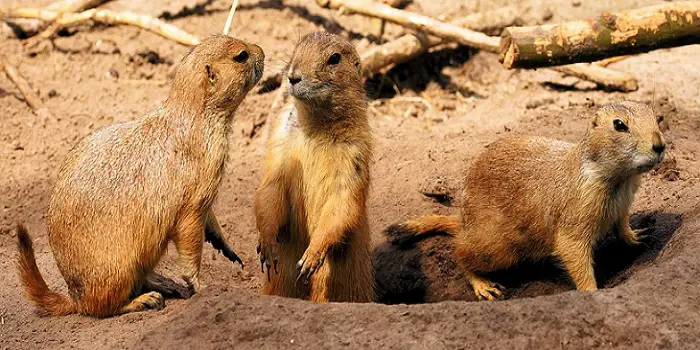
Every animal and human put on Earth has a role to play, no matter how small.
Even the smallest rodents have a significant role, as the entire ecosystem would be disrupted if they ever went extinct.
That is the beauty of biodiversity on the planet.
You may think prairie dogs are just cute and chubby mammals, but even they have a significant role.
According to a WWF conservation biologist, prairie dogs support more than 130 species through their activities.
They are a food source for wild animals, and prairie dog towns are a place of shelter for many animals, such as toads, jackrabbits, and rattlesnakes.
So, their importance can’t be ignored.
Of course, there is much more to them as they are incredibly interesting rodents.
So, let’s come to some Prairie Dogs’ interesting facts…
Prairie Dogs Facts
Do you know how did prairie dogs get their name?
According to wikipedia.org – The black-tailed prairie dog (Cynomys ludovicianus) was first described by Lewis and Clark in 1804. Lewis described it in more detail in 1806, calling it the “barking squirrel.”
When French explorers first heard prairie dogs barking, they called them “little dogs.”
Prairie dogs are named after the physical environment they live in and the particular sound of their warning calls, which is similar to a dog’s bark. The genus name “Cynomys” comes from the Greek word for “dog mouse.”
Already feeling excited – here are 12 more facts about prairie dogs you didn’t know before.
I bet you will love to know about them…
1. Homes of Prairie Dogs Are Well Organized
We often forget that animals are also highly intelligent.
Prairie dogs can create complex and intricate underground burrows for themselves.
These have a variety of areas for sleeping, going to the toilet, and baby nurseries.
These burrows are tunnel-like and have holes so that ventilation can be provided to the prairie dogs.
Lastly, every exit in these burrows has a listening post.
Prairie dogs may seem like small mammals, but their abilities in designing underground systems are unmatched.
One can say they are the underground world’s architects, and many other animals seek shelter in their burrows due to their complex and intricate nature.
2. They Have A Complex Means of Communication
Scientists that have performed research on prairie dogs have found that their means of communication are even better than dolphins and chimpanzees.
They recorded the calls of these dogs for more than thirty years.
After all these years, they found that prairie dogs have chirps and barks that aid them in conveying their message to other prairie dogs.
They use these means to alert other dogs in the town that a predator is nearby.
However, their communication is so complex that they even have different calls for different predators, and they create sentences describing the predators.
These include the predator’s direction, color, speed, and size.
The most interesting part is that they convey this message in one bark.
Scientists also found that prairie dogs have a specific bark for describing a human approaching with a weapon.
3. They Are Highly Social
Prairie dogs are the party animals of the prairie ecosystem.
They are incredibly social, and their family groups are known as coteries.
These consist of an adult male and one or more adult females carrying the child of the adult male.
Many coteries come together to form wards, and many of these wards come together to form a town. Hence the term prairie dog towns.
They live amicably with each other.
They share meals, and food, protect each other’s burrows,s and groom one another.
These are perhaps some of the most cooperative mammals you will find in the prairie ecosystem.
4. Prairie Dogs Mate Once A Year
Many people have this misconception that prairie dogs multiply incredibly fast and mate a lot.
However, that is far from the truth. Prairie dogs only mate once a year in winter. Females only go into heat for an hour.
After that, they produce a litter of prairie pups. These litters can include anywhere from 3 to eight prairie pups.
However, the sad part is that only half of these pups survive during their first year.
So, the perception that prairie dogs multiply fast is just a misconception as their mating season comes every year in early winter and only lasts for an hour.
5. Their “Wave” Serves an Important Purpose
If you are ever in a prairie dog town for a while, you will get to see them doing the “wave.”
That includes a prairie dog jumping on its hind legs, throwing its arms in the air, and then proceeding to make a loud yipping sound.
The wave by one prairie dog is enough to make others join in and do it too.
While this is wholesome to watch, it serves an important purpose for the entire prairie dog town.
It reminds everyone to pay attention and be vigilant.
They can do this when there is a predator around, prey around, and in many other situations that would require attention.
So, it is not just adorable but also essential to their community.
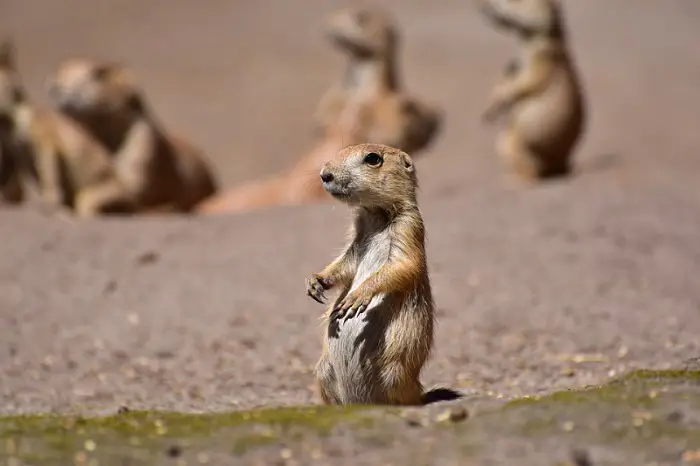
6. They Are Essential To The Prairie Ecosystem
All animals in the animal kingdom serve an important purpose.
The entire prairie ecosystem relies on these mammals because they serve various purposes.
Firstly, their tunneling techniques are a gift.
The way they build their burrows and tunnels aerates the soil, which allows for more water penetration.
Other than that, their waste is incredibly high in nitrogen.
That improves soil quality and ensures that the soil and vegetation in the region are perfect.
Prairie dogs also serve as a food source for many animals in the ecosystem, and many other species use their burrows as nesting areas once these mammals desert them.
Without these prairie dogs, the entire ecosystem will be disrupted, and many species of animals will lose support and a food source.
So, many conservation biologists have diverted their efforts toward conserving these species in the prairie ecosystem.
7. Only 5% of Prairie Dogs Remain Now
In the early days, North America consisted of hundreds of millions of prairie dogs.
There used to be endless prairie dog towns, and many European settlers passing through the West have written about these beautiful colonies multiple times.
These prairie dog towns were so big that they extended for miles on end. However, this is not true anymore.
Over time, humans have encroached on these areas, and the prairie dog towns have all gone. As compared to the original population, it has shrunk 95% now.
The population is only 5% of what it used to be before.
Because of this shrinkage, the black-footed ferrets are also on the verge of being endangered, which brings us to our next point.
8. Black-Footed Ferrets Depend On Prairie Dogs
More than 130 species depend on the prairie dogs, but the black-footed ferrets depend on them the most.
The ferrets depend on them as their food source and their habitat as well. When prairie dogs desert their towns, the black-footed ferrets also utilize their habitat.
These ferrets are becoming endangered because the population of prairie dogs has shrunk significantly over time.
Many organizations are making an effort to stop black-footed ferrets from becoming endangered due to the prairie dog population shrinkage.
9. They Are Tough Mammals
To you, the prairie dogs may look like small and adorable mammals, but they are incredibly tough and can protect themselves from various predators.
They are skilled at fighting, have strong teeth, and their claws are sharp, which means they can dig into anything.
Even the black-footed ferrets have to go through some struggle before they can catch the prairie dogs.
They put up a tough fight, and that is why it is tough for any predator to catch them.
Eventually, they do, of course, but you should never underestimate their toughness.
10. They are Chiefly Herbivores
Prairie Dogs are mainly herbivores, and they majorly feed on seeds and roots of different kinds of plants.
Specifically, they like to eat the roots of bulbs, tubers, trees, herbs, shrubs, grass, vegetation, dandelions, and alfalfa.
You can also find them eating some leaves and insects.
In case you notice a dead grass patch in the mid of your yard, a prairie dog may have been eating its roots.
This means their food hunt includes flower beds and gardens.
Grassroots are their food, but just like any other animal, they also like to eat the easiest food first.
You may notice your flower beds are torn, or your plants are dying for no reason.
Well, it is because of prairie dogs in many cases. Check for the deep prairie dog mounds, and you’ll know the real culprit.
11. They Kiss To Determine Family Members
Apart from being one of the toughest animals in the prairie ecosystem, prairie dogs are incredibly generous and loving.
They love being close-knit with members of their family and coterie, and they also have a way of showing this affection.
Whenever prairie dogs come and go from their burrow, they will either touch noses or lock their teeth with other family members.
This is their way of showing affection, and it also helps them determine if the prairie dog is a member of their family group or not.
12. Young Prairie Pups Need Love And Care For Six Weeks
You will notice that many newborns don’t stay with their families in the animal kingdom and get out as soon as they can walk.
However, that is not the case with prairie pups.
They are incredibly affectionate and need love and care before they can enter the real world.
The prairie dog pups are born with no hair, and their eyes are closed for a while.
In the beginning, they depend on the mother’s love and care so that they can function properly.
They only leave the burrow six weeks after being born, and they consider leaving their family group only after they are one year old.
Why and How to Get Rid of Prairie Dogs?
Prairie dogs are known for their ability to destroy farms and gardens due to their tunneling activities.
This also means that their disaster isn’t limited to the effect of feeding on your plants and garden, but they can also wreck your underground water lining system, turf, and complete landscape.
Most people use a trap for catching prairie dogs in their yard because they are much cheaper and easier than paying a professional pest control company.
No matter what type of trap you use, it’s important that you place the right bait that can help you get success faster.
What are prairie dogs’ baits?
In simple words, commercially available baits are toxins disguised as food.
They smell and taste like their favorite food; hence they consume it.
But in reality, it’s the poison inside the camouflaged food that helps to trap them or to kill them fast.
If you are considering these store-bought baits, some of these baits will be available in granular form, while others are in the shape of brick or blocks.
However, the physical form hardly makes any difference to prairie dogs. As long as they consider it food, they’ll consume it.
Most of these poisons contain three main active ingredients. These are strychnine, zinc phosphide, and diphacinone.
Among all of these ingredients, Strychnine-treated baits are the most common type that is effective in controlling prairie dogs.
How to use the bait to catch them?
The simplest way to bait the habitat of a prairie dog is to put the bait in the mound as deep as you can.
Do it with the help of a stick or piece of rebar and cover the mound’s opening.
The next option is to get a shovel.
Blocks are too big in size to be deposited through a hole in the ground. Hence you need to dig into the tunnel to put the bait block there.
Finally, you can cover the hole and the major opening in the mound.
For using granular bait, get a long stick to poke a hole in their tunnel.
Now put the granules through the tunnel and cover the hole. Also, cover the tunnel’s opening.
It will make the prairie dog investigate the hole and re-open it. In this procedure, it will find the bait.
In case you have a bait applicator tool, you can use its long rod to make a hole in the tunnel and pour the bait via the applicator.
Then cover the hold and the opening of the tunnel.
Where to put the baits in your yard?
You can place these baits in the prairie dogs’ tunnel around 18-24 inches from the mound opening.
Make sure that you bait every mound, whether it’s old or new.
Before placing them, also make sure you find out in which direction the tunnel is dug.
Investigate inside the opening to find out which way the tunnel has been dug.
A simple place to start is by probing the mound. It is usually a horseshoe shape.
Because the prairie dogs dig deep in the ground, they put the dirt up behind them, making a semi-circle shape.
The open end of the shape is the direction in which the tunnel is headed.
Note: Mostly, prairie dogs will not get attracted to the bait during extreme weather conditions (either hot or cold).
So, it’s good to lay down the baits during moderate temperatures.
Why use poison instead of food bait?
Using poison bait instead of food can be easy and safe to trap prairie dogs if you do not have small children or pets.
When a foraging prairie dog comes to your garden, he will possibly use the existing tunnel and end up eating the leftover bait that you applied in their mounds.
He is hunting because he is hungry, so it is obvious that he will eat the bait and die in the tunnel itself.
Keep in mind that when you use a prairie dog’s live trap to bait and kill the rodent, it becomes mandatory for you to get rid of their dead bodies.
This is because of the fact that they are wild animals, and they may be a carrier of lice, mites, or fleas.
They may also be drenched in excrement, and depending on how they got killed by the trap, they could be highly bloody too.
There may also be feces, skin, hair, and body fluids of prairie dogs present in the trap, and you need to thoroughly clean all of these from the trap before you can use them again.
Using proper bait to kill the prairie dogs in their tunnels will safeguard you from all these mentioned issues.
Also, an unused poison will be present in the tunnel below your yard, which will work as a long-time deterrent to any future intruder.
Final Words
Did you ever think that creatures as small as prairie dogs would be so complex?
Well, they are incredible creatures, and there is much more to them than just their cute face and chubby body.
They support the entire prairie ecosystem; without them, things would never be the same.
If you ever want to visit a prairie dog town, all you have to do is visit either the West or the central United States, and you will find them in millions.
In case you have prairie dogs in your yard and want to keep them away, using a bait trap can help a lot.
Share the post "12+ Surprising Facts You Didn’t Know About Prairie Dogs"

Welcome to ProShieldPest.com. I am Tina Jones. I have been working as a pest removal professional in Winslow, Arizona lately. At present, I love to spend my time with my family as a retiree.
Here I share all my knowledge and experiences to help people understand better how they can stop pests at their homes without actually killing them. Hopefully, the information you will find here will help in safeguarding your home! You can check more about me here.

